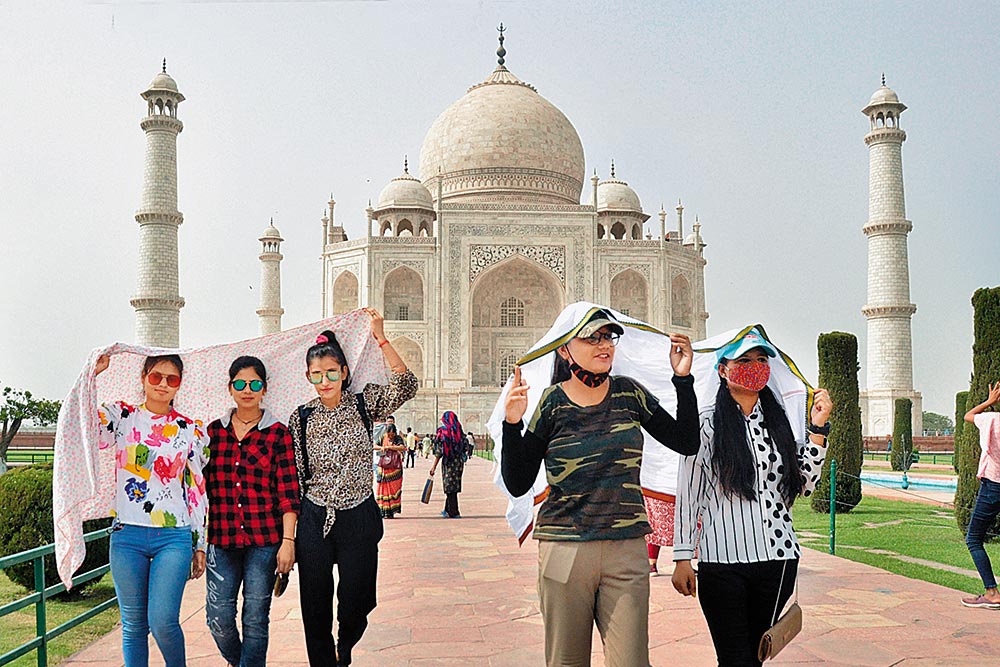Irrespective of which party comes to power when votes are counted on June 4, there is little ambiguity that the new government will be leading an India that is fast emerging as a force on the global stage, both economically and geopolitically. Successive quarters of robust gross domestic product (GDP) numbers have reinforced India’s standing as a positive economic outlier, routinely bettering the expectations of market analysts. With growth in short supply across the globe, India’s performance augurs well for its ambition of toppling both Japan and Germany to become the world’s third-largest economy in the next five years.
Characterised by a resilient streak unseen in other major economies, the next step in India’s growth story will be defined by its capacity to further pursue economic reforms and manage fiscal weaknesses. If anything, the post-Covid years have shown that incremental reforms have served us better than big-bang policy changes, and a sense of economic continuity could prove crucial in sustaining the momentum of recent quarters. To fulfil our true growth potential, a few key areas must be paid special attention to by the incoming government.
Banking on Service Sector
While ‘Make in India’ has undoubtedly boosted India’s manufacturing capabilities, it is hard to ignore the role of the service sector. Accounting for a large share of the GDP, services form the backbone of the Indian economy. According to a recent report by Goldman Sachs, India’s services exports will be worth $800 billion by 2030, up from $340 billion last year.
Our information technology (IT) services have long been a boon for the world and such exports will continue to expand on the back of a large and talented workforce. While the software industry will continue to form a significant chunk of the overall exports, newer avenues in the services space mean there are ample opportunities to explore.
With our digital technology prowess, tapping into domains such as banking, financial services and insurance could help us look beyond just IT and lend much-needed diversification to our services exports. For instance, the Unified Payments Interface—already in use in countries such as Singapore, Nepal, France and the United Arab Emirates—is a scalable technology that has the potential to become India’s next export frontier.
At the same time, it is important to ensure that exports are not restricted to a handful of geographies. With the United States and Europe accounting for the bulk of our services trade, we must move beyond traditional markets. Asian countries have shown an appetite for services across finance, insurance and telecommunications, and we must cash in. In the coming years, India could potentially establish itself as a services behemoth—akin to what China has achieved with manufacturing.
Taking Wings
India’s economic heft is perhaps embodied by the rise of the aspirational Indian middle class. Greater purchasing power and an urge for superior experiences have led to a surge in demand for premium products and services. This trend is best reflected in tourism. According to a report by Booking.com and McKinsey, India’s total travel expenditure is set to hit $410 billion in 2030.
Improved road and rail connectivity, refurbished airports and new air routes have contributed substantially to the increase in domestic tourism, which could be further fuelled by the popularity of religious and spiritual travel. Destinations such as Ayodhya, Mathura, Varanasi and Amritsar, once frequented by the older generation, are seeing a raft of young travellers. At OYO, religious travel has emerged as a focus area that will see us expand operations and launch 400 properties across these cities this year.
The incumbent government’s investment in building and reviving important spiritual destinations deserves praise and such efforts must be continued to reap the economic benefits of domestic tourism. Travel and tourism, after all, are economic multipliers and offer vast job generation opportunities, especially in rural and remote areas.
Saying Aye to AI
Artificial intelligence (AI) has changed the way we work and innovate, and it has been encouraging to see India move with the times and embrace the AI wave. The launch of the IndiaAI Mission, with an outlay of over Rs 10,000 crore by the Central government earlier this year, was a signal of intent to establish India as an AI powerhouse. While others have been consumed by fear that AI may take over jobs, we see it as an indispensable innovation tool that can enhance productivity.
In fact, the massive shift towards new age technology has put many sunrise sectors in focus. Advancements in technology and an emphasis on inventive business models has meant that industries focused on electric vehicles, clean energy, drones, space technology and agricultural technology have continued to attract investors despite the relative slowdown in funding in recent months.
The AI push will largely benefit India’s start-up ecosystem, which has become the third largest in the world after the US and China. India’s objective of Viksit Bharat cannot be realised without the contribution of start-ups, which are poised to drive the next wave of economic growth and double up as wealth creators.
Mind the Gap
Countries with a highly skilled workforce are better positioned to draw investments, spur innovation and engage in profitable international trade in a supremely competitive global economy. The Indian workforce is reported to have one of the largest skill gaps in the world, a problem that is exacerbated by socio-economic disparities and the constant migration of labour from one sector to another.
For India to meet its domestic requirements, it is imperative that we ensure that the current workforce is in line with employer requirements. Technology-driven education and training is necessary to equip the workforce with relevant skills. Demand for skills, especially the vocational kind, will only increase as we see more jobs get automated with the advent of cheaper and more efficient technology.
The Ministry of Skill Development and Entrepreneurship has already laid out a 100-day plan for the next government that will see the introduction of standardised skilling courses to facilitate easier migration of workers, as well as counselling and mentorship. This is a welcome step, especially since they will be focused on emerging sectors like fitness, wellness, hospitality and healthcare.
Skill and talent development not only fosters a spirit of competitiveness but is also essential to inclusive growth, which will hold the key to Viksit Bharat and help turn India’s economic gains into actual human development.

Ritesh Agarwal is Founder and Group CEO, OYO











 Just one email a week
Just one email a week